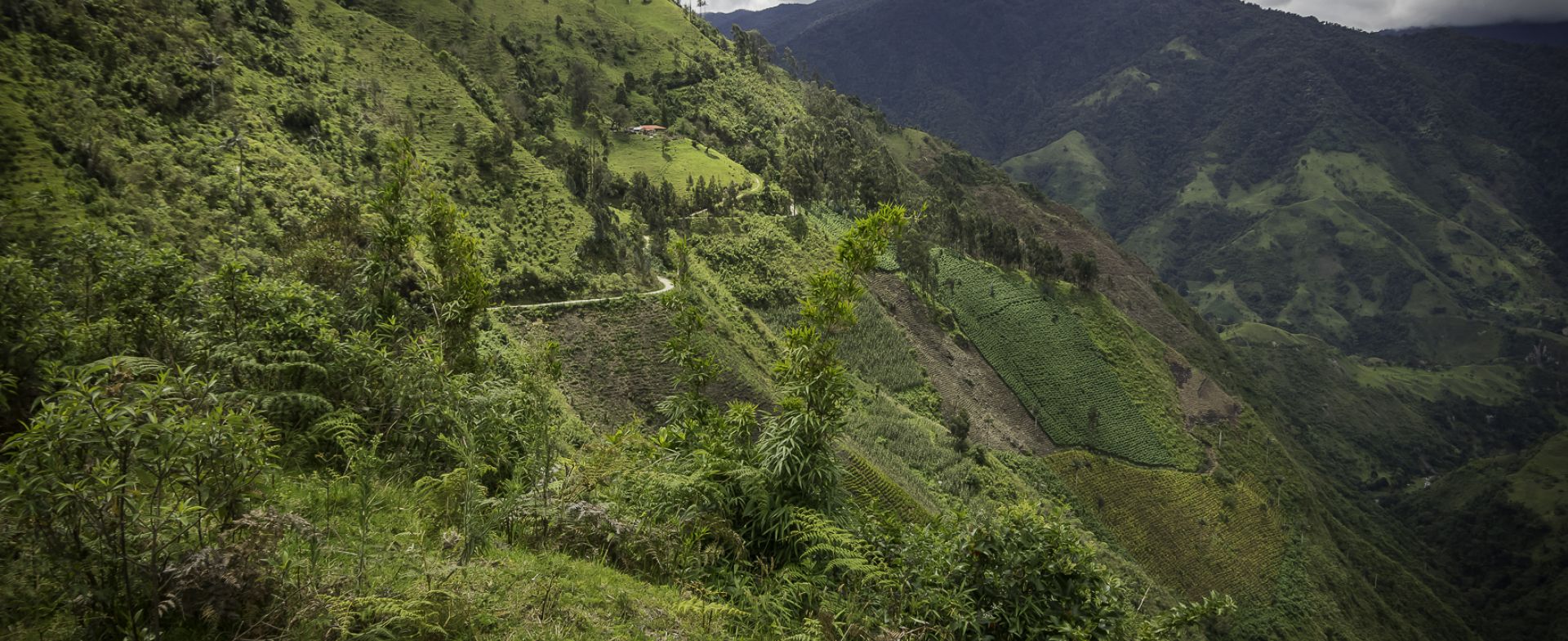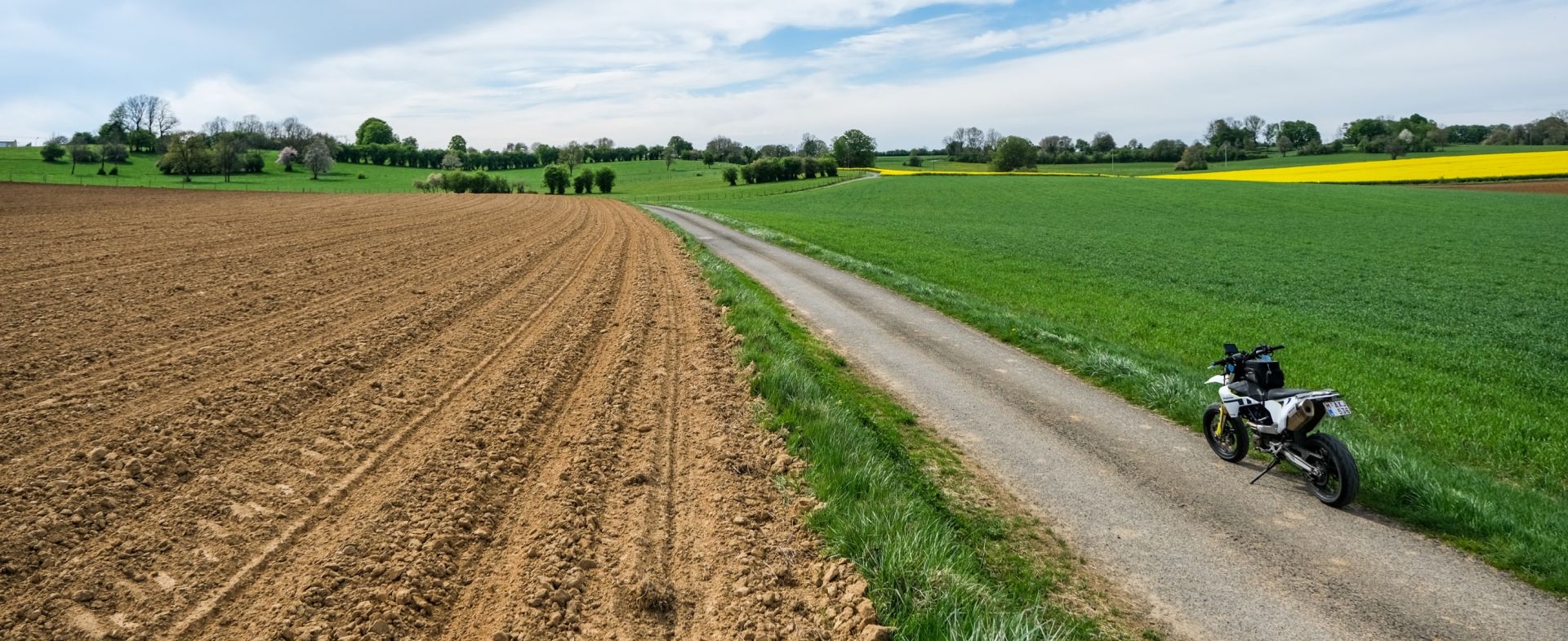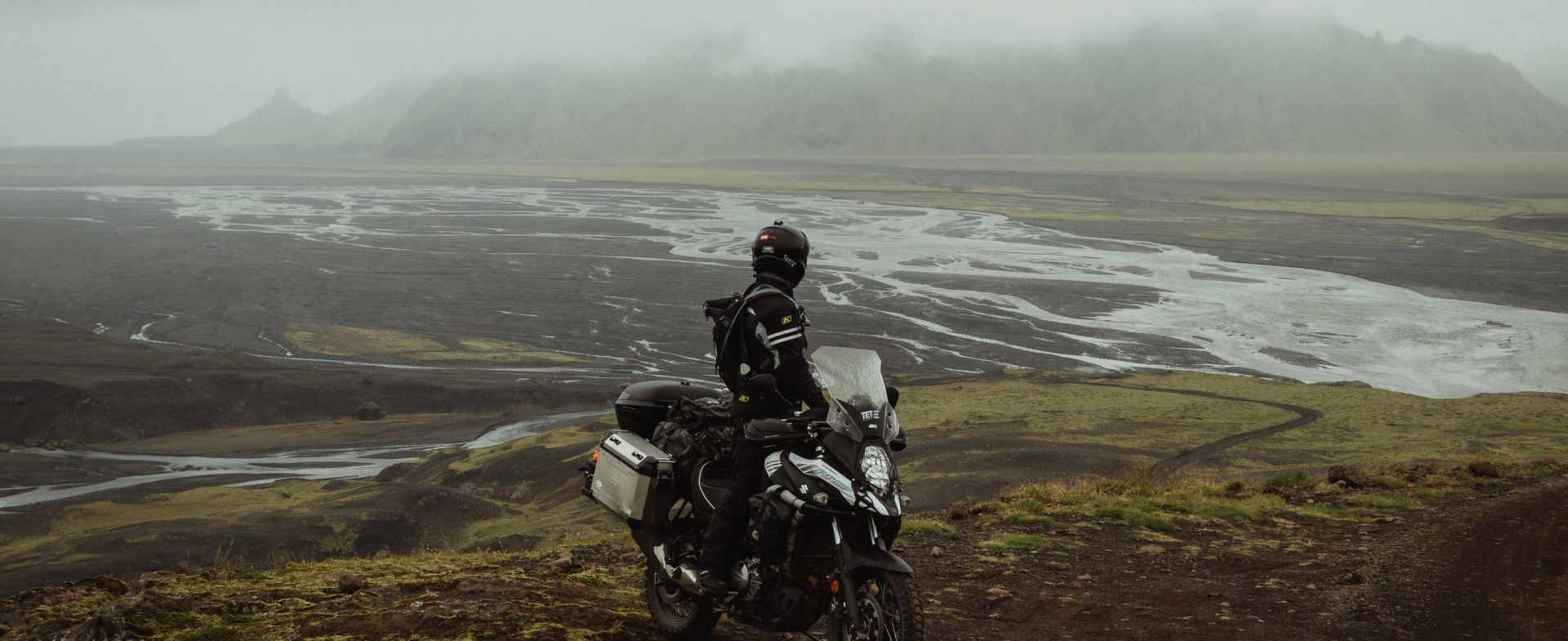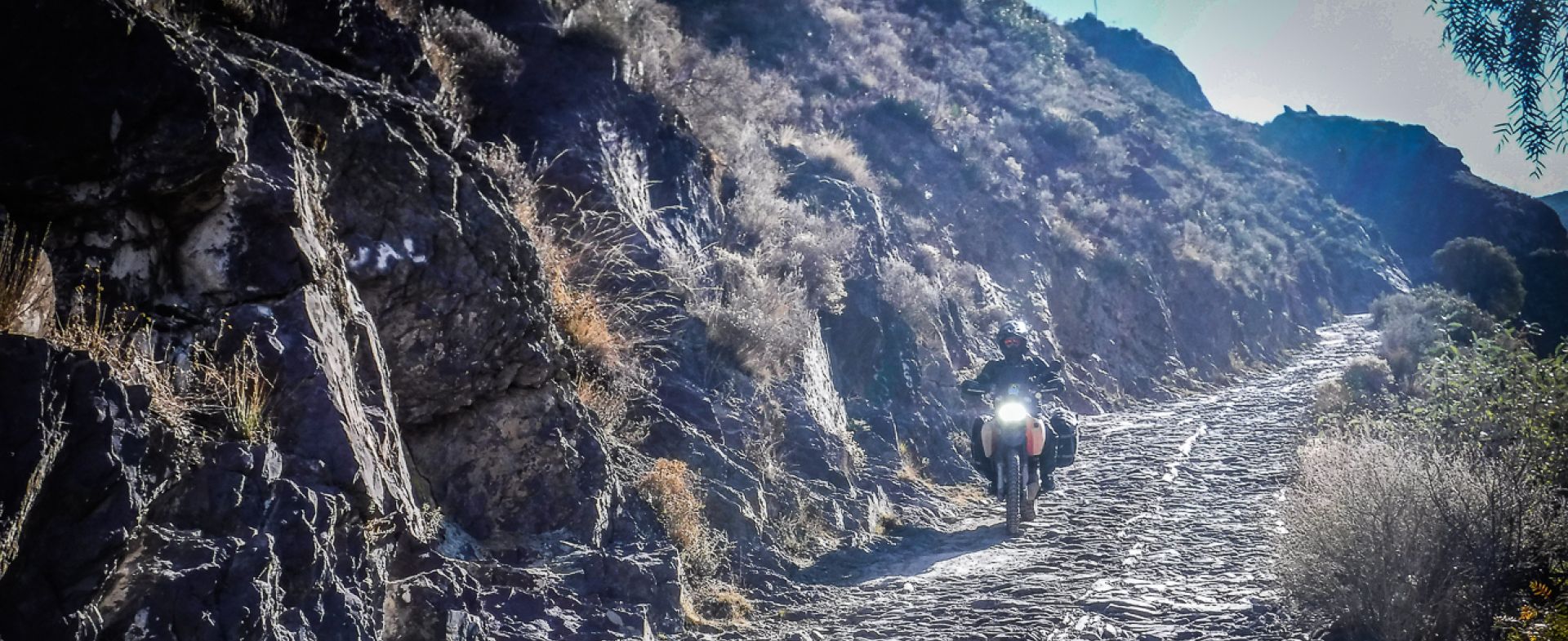This was easily one of the most stunning routes I’d done in Colombia so far: the trail wound along a mountainside revealing a beautiful emerald green valley dotted with palm trees and a lonely farmhouse here and there, the nature taking over everywhere. There was barely any traffic save for some loggers’ horses and an occasional donkey rider, and I felt like I had gotten away from civilization and into a land barely touched by humans.
RTWPaul: Colombia’s Paradise of Coffee and Dirt
Motorcycle Diaries
Riding a narrow dirt trail cutting across the famed Cocora Valley, I felt lost in thought.
Then, all of a sudden, I spotted an unusual sight. A BMW F800GS motorcycle was parked on the side of the track, its owners – a young Colombian couple – were taking a break chatting and flying a drone. After the initial exchange of hi’s and how are you’s, it turned out the GS riders were locals from the nearby city of Pereira. “In these recent years, we are finally discovering our own country on bikes!”, they told me excitedly. “Most of the dirt tracks in the mountains used to be off-limits for us because of the FARC or the narcos, but that’s no longer the case. We’ve got Colombia back, and the riding here is just insane”.
I couldn’t agree more. Colombia has been working hard to put its turbulent past where it belongs: in the pages of history, and nowadays, the country is opening up to adventure riders like never before. Cocora Valley, the very heart of Colombia’s Coffee Triangle (zona cafetera) between Ibague, Cali, and Medellin, is nothing short of an ADV paradise: while there are enough good-quality tarmac roads connecting Ibague, the coffee capital Salento, and Medellin, this region is chock-full of smaller dirt tracks, old mule paths, and little-known trails connecting smaller pueblos and coffee farms.
All you need to do is take a quick look on Google Earth, pick a route, and go explore. The riding in the Zona Cafetera is easily among the best in Colombia, and the local hospitality is unparalleled. However, the best place to start is where it all begins: Medellin.
The City of Eternal Spring
Medellin, the second largest city in Colombia, was once known for its violent narco wars. Pablo Escobar, world’s most notorious drug lord, once controlled the entire city, and the people of Medellin still remember the days of his terror.
Today, however, Medellin is a city of colorful street art, bohemian quarters, lush green parks, modern financial districts, vibrant night life, and quiet suburbia. If you’re visiting Medellin, don’t be the hapless gringo tourist with an Escobar T-Shirt: the locals despise the man and all that he once represented, and mentioning Pablo is seen as bad taste by the people of Medellin. Instead of poking at the city’s painful past, enjoy what it has to offer today, especially in the form of salsa, aguardiente (local Colombian liquor), and the incredible views from the cable cars.
Medellin is called “The City of Eternal Spring” because the weather here is mild and warm year-round, making it the perfect pit stop if you need to repair your bike or just take a break.
In Medellin, make sure to try Antioquia’s specialty, the Bandeja Paisa: a national Colombian dish of ground beef, rice, fried plantains, arepa (typical local corn cake), eggs, and avocado. This stuff is guaranteed to fill your belly for a long, hard day’s ride.
Before you head for Salento and the coffee region, do a small detour riding East of Medellin and visiting Guatape, a small town situated near a network of beautiful lakes. Guatape is probably one of the most colorful towns in all of Colombia, and the dirt trails to Guatape take you across a wild green country of endless rolling hills and small ranchos along the way.
The Coffee Country
From Guatape, there’s no shortage of dirt tracks leading south towards Manizales and Pereira. Alternatively, you can ride to Ibague on paved roads and from there, take the dirt trail to Salento via the Cocora Valley, which is one of my favorite routes in the region. Cocora Valley is famous for its palm trees said to be among the tallest in the world.
However, Cocora Valley is typically only accessible via local 4x4 or horseback tours, and only on the outskirts. If you want to have the entire place to yourself, ride some incredibly scenic trails, and see the local life in a way a tourist never would, take the Ibague – Salento dirt road and prepare for a challenge. While the track isn’t highly technical, there are some trickier sections, so plan to spend several hours covering the entire route.
Along the way, you’ll meet local farmers who are always happy to stop and chat, see the surreal palm trees dotting the mountainsides, and enjoy some of the most beautiful vistas in Western Colombia.
Once you get to Salento, there’s plenty of places to stay and eat. Keep in mind that Salento is very popular among tourists, though, so if you’re after some peace and quiet, head to nearby Filandia instead.
Filandia is a smaller but equally colorful and charming town, and it’s worth staying there for several days to explore the local coffee farms. I’m not much of a coffee guy myself, but if you’re into your coffee beans, Filandia and the surrounding area is the place to be. Here, the locals grow organic, hand-picked specialty coffee you won’t find in any store around the world.
The farmers are usually happy to show you around the plantation, boast about their secrets of growing the perfect bean, share the process of fermenting and drying the beans, and finally, giving you a taste of their specialty coffee which, I’m told, is absolutely heavenly. Each family has their own special method of growing the beans, and the cafeteros are incredibly proud of their trade.
Colombia’s coffee region is one of the most beautiful places in the entire country. If you can spare some time, spend at least a week or two exploring the area: the countryside of green rolling hills is absolutely stunning, and you have so many dirt trails crisscrossing the entire region you’re guaranteed to get your fill of adventure.
If you’re planning to ride to Ecuador next, make sure you head for Pasto and take the Sibundoy-Mocoa-La Hormiga route, known locally as Trampolin del Diablo, the Devil’s Trampoline. Often likened to Bolivia’s Death Road, the Devil’s Trampoline is a narrow mountain dirt and cobblestone trail revealing jaw-dropping views, sheer drops, and waterfalls. It’s the perfect route to finish your Colombian adventures with something truly spectacular.





























